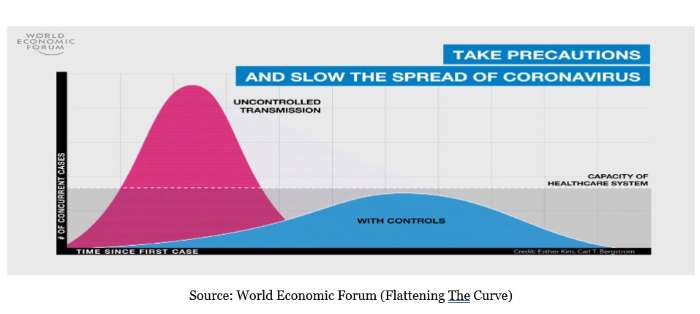
COVID-19, an infectious disease caused by the SARS-CoV-2 virus, is wreaking havoc across the world. As the pandemic continues to disrupt life on the planet, the healthcare systems across the world are turning real-world data to better understand and monitor the virus. Technology can play a key role in combating COVID-19, but there is a need to get the policies right. Data play a central role in the global efforts to combat the outbreak through virus detection, mitigation of spread, treatments, and vaccines.
The concept of smart city has recently gained traction in academia, government, and industry. Smart cities use advanced technologies to run city operations centers, planning and policy offices, research centers, innovation labs, and living labs for generating, processing, and analyzing data to enhance decision making processes and to develop and implement innovative solutions for improving sustainability, efficiency, resilience, equity and the quality of life. In short, they leverage the right data to create real change.
READ I Gold smuggling: Faulty policies, corruption behind illegal trade
Data Science can significantly contribute in COVID-19 combat in smart cities by:
- Risk assessment and patient prioritisation
- Screening and diagnosis
- Simulation and modelling
- Contact tracing
- Understanding social interventions
- Logistical planning and economic interventions
- Automated patient care
- Supporting vaccine discovery and new treatments
- Data analytics can be effectively supporting by:
- Improving diagnostic accuracy
- Improving drug development process
- Reducing the risk associated with prescription medicines
- Improving patient engagement
- Streamlining knowledge management
Leveraging data-driven tools to fight COVID-19 on multiple fronts is a significant part of the approach in combating the pandemic today. These tools can take multiple forms and are created to realise different strategies. For instance, China is utilising its pre-existing surveillance infrastructure to track whether individuals are compliant with quarantine orders, as well as to detect potential COVID-19 infections by using thermal scanners to measure body temperature of individuals at train stations. Another example of data-driven tools is the availability of data-driven dashboards that are used to map the status of the COVID-19 pandemic in real time.
READ I Aatmanirbhar Bharat: Self-reliance in agriculture first step towards economic power
Simulation and modelling: As data are shared, and computing performance improves (including artificial intelligence), mathematical modelling will have a greater role in supporting clinical diagnosis and optimising a combination of strategies. In view of the substantial data accumulated on COVID-19, an essential next step is to estimate whether a second wave of COVID-19 will appear at any affected place.
Data modelling and analysing coronavirus spread using data analytics: Just because the rise in number of cases is exponential, it does not imply that we can fit the data to an exponential curve and predict the number of cases in the coming days. Compartmental model techniques are normally used to model infectious diseases. Same could be used in the case of COVID-19 too. The simplest compartmental model is the SIR model.

As it can be seen even in the under-estimates and from the actual data around us, the sharply increasing number of cases is bound to overwhelm the medical infrastructure of any nation. So, by slowing down the transmission, we don’t actually stop the spread, but keep the transmission and the active cases at any point well within the limits of the medical handling capacity. This is what is being referred to as “flattening the curve”. Data analytics and AI tools inform policy measures that limit travel, restrict citizens’ movement, impose quarantines or self-isolation requirements, and shut down broad swaths of the economy.
READ I India needs a comprehensive population policy

Contacts tracing: Governments are also using citizens’ health, location, and other data to track the spread of the virus and isolate infected or at-risk individuals. Attempts by the governments worldwide to leverage smartphones in contact-tracing have prompted private companies to jump into the fray. Privacy experts have repeatedly pointed out that such measures could be doing more harm than good.
READ I On a wing and a prayer: India’s travel and tourism industry looking for a bailout
There is an urgent need to formulate data policies based smart interventions for leveraging data from the following key functional areas to support decision making:
- Migration data of workers, skill survey etc
- Employment sector-wise data, type of employment and workforce
- Human health and wellness index & number of houses covered under WASH
- User service fee collection efficiency
- Number of patients of respiratory and other diseases
- Unequal food/medical distribution/shortage of supply etc under public distribution system
- Vulnerable groups like senior citizens, children, pregnant women, immune deficient people
- Number of patients of respiratory and other chronic diseases
- Region-wise number of responsive/aware citizens
- Responsive ULB/urban local governance & efficiency in service deliveries
- Number of healthcare frontline workforce (including doctors, nurses, sanitary workers etc)
- Healthcare infrastructure/ICU/isolation wards/emergency wards/ventilators
- Supply chain and logistics management of essential food items
- Tourism sector data (via travel history)
- Digital divide (use/capacity building of digital technology)
- Environment-air-water quality improvement
- Mobility-shift to private vehicles/bikes ridership
READ I Global warming to test 1.5C limit set by Paris Agreement
There is a need for policies for data governance framework / guidelines related to privacy, and security of the data generated during / post pandemic combat. For data governance framework, the focus is on the governance strategy and vision; business as usual programme management (PMO), change management / user adoption, information lifecycle management for data security the factors such as confidentiality, manageability, availability, disassociability, integrity and predictability are considered.
Policies/guidelines for data economy to overcome economic crisis: The data generated during and post pandemic combat can be monetised to supplement economic loss. The user data can be monetised, in which government or sponsored public-private sector collects the data by providing free product/service.
Utility data monetisation: Basic data could be readily available in public domain and would be provided without additional analysis or processing with respect to system data. Value-added data could be available for a fee determined as it is delivered and requested frequently and provided on ad hoc basis and are granular than basic data with respect to customer data.
READ I Atmanirbhar Bharat: Reducing dependence on China for pharmaceutical ingredients
Revenue potential vs value proposition: Data revenue potential is graded as enriched data, transformed data and applied data whereas value proposition is classified into data as a service (syndication), insight as a service, analytics-enabled platform as a service.
Policymakers must take bold and immediate steps to address the urgent need of formulating policies to foster combating COVID-19 in all affected areas. In short, they should stop guessing and start leveraging data insights.
(Suryadev Prakash is an expert in smart cities with Infinite Sum Modelling LLC, Seattle. Dr Badri Narayanan Gopalakrishnan is founder and director, Infinite Sum Modelling.)
Dr Badri Narayanan Gopalakrishnan is Fellow, NITI Aayog. Views expressed are personal.


